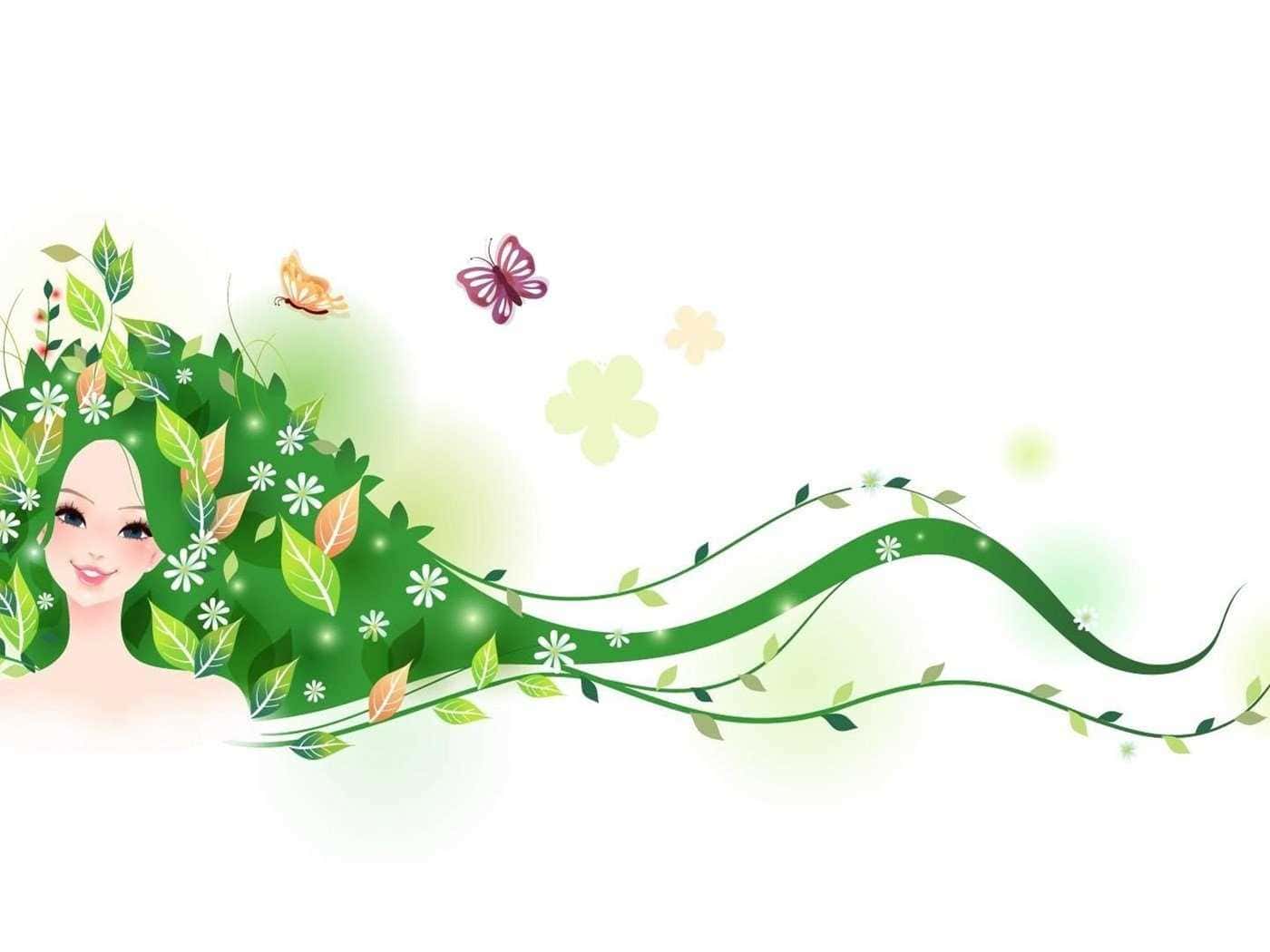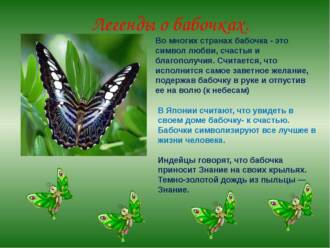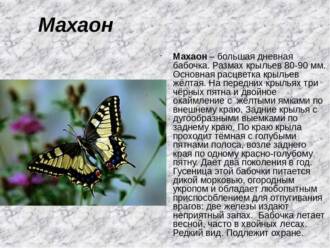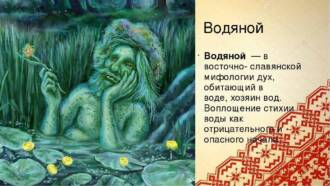
Spring is the time when nature wakes up from its winter sleep. Together with the first warm rays of the sun, colorful and delicate creatures return to the fields and meadows - spring butterflies. They are the embodiment of beauty and lightness, symbolizing the beauty of nature and the renewal of life.
Butterflies in spring become an integral part of the natural landscape. Their bright wings emit a gentle light, attracting attention and delighting people. Each type of butterfly has its own unique colors and patterns, creating a real feast of colors in the spring sky.
But butterflies are not only beautiful, they also carry the symbolism of spring. In some cultures, they are associated with transformation and rebirth. The metamorphosis that a butterfly goes through, from egg to caterpillar and then to cocoon and finally to a beautiful insect, symbolizes overcoming difficulties and a new beginning. The butterfly becomes a symbol of change and renewal, reminding us that there is always a chance for new life and transformation.
Why are butterflies needed in spring?
Spring is the time of awakening of nature and the rebirth of all living things after winter hibernation. Butterflies play an important role in this process, performing several important functions.
1. Pollination of flowers: Butterflies are one of the main pollinators of flowers, helping plants reproduce. When a butterfly lands on a flower, it carries pollen from one flower to another, facilitating pollination and the formation of fruits and seeds.
2. Seed spreading: Some species of butterflies also play a role in the dispersal of plant seeds. They may carry seeds on their legs or body and then drop them elsewhere. This promotes plant diversity and helps new plants germinate and spread.
3. Food for other animals: Butterflies are an important food source for many other animals such as birds, frogs, and insectivores. In the spring, when other food sources are scarce, butterflies become the main source of energy for these animals, helping them survive until other food sources become available.
4. Beauty and symbolism: Finally, butterflies in spring are a symbol of beauty and renewal. They give us joy with their bright wings and gentle flight. Seeing a butterfly in spring can be a symbol of new beginnings, rebirth and hope for a better future.
Symbolism of spring butterflies

Butterflies are one of the brightest and most beautiful symbols of spring. They are associated with the renewal and rebirth of nature after a long winter.
The beauty and tenderness of butterflies
Butterflies attract attention with their delicate and colorful coloring. They are a symbol of the beauty and aesthetics of spring. Their bright wings, decorated with various patterns and colors, symbolize vitality and joy.
Symbol of rebirth
The process of transformation from caterpillar to butterfly is a symbol of rebirth and transformation. Butterflies remind us of the possibility of change and development, the ability to overcome difficulties and become better.
Symbol of freedom and lightness
Butterflies symbolize freedom and lightness. They fly, despite their small and fragile nature, and always strive for light. Their flight is reminiscent of the opportunity to get rid of attachments and restrictions, the feeling of lightness and freshness of the spring air.
Symbol of the arrival of spring
Butterflies are a sure sign of the arrival of spring. When they appear, it means that nature is waking up from hibernation and starting a new cycle of life. Butterflies symbolize the beginning of spring and bring joy and hope to anyone who sees their first flights.
The role of butterflies in the dust process
Spring is the time when nature wakes up from hibernation, and butterflies play an important role in this process. They are one of the main pollinators of plants, helping them to reproduce and preserve species.
Butterflies are indispensable pollinators, because when they visit flowers, they collect pollen on themselves and transfer it to other flowers. Thus, they help plants to be fertilized and ensure the diversity of the plant world.
Butterflies become especially active in spring, as this is the time when many plants begin to bloom. Butterflies are attracted to the bright colors of the flowers and the sweet nectar they feed on. In the process of visiting flowers, butterflies accidentally collect pollen on themselves, which sticks to their bodies.
However, the role of butterflies in the dust process is not limited to collecting pollen. Butterflies can also carry pollen over long distances, which contributes to plant diversity and genetic variability. Thus, butterflies play an important role in the conservation of biological diversity and ecological balance in nature.
The importance of butterflies for plants
Spring is a period when butterflies play an important role in plant life. They act as pollinators, carrying pollen from one flower to another. Through this process, pollination and the formation of new seeds and fruits occur.
Butterflies are attracted to flowering plants with their bright and beautiful wings. They squat on a flower to drink nectar or lay eggs. In the process, they accidentally transfer pollen from the stamens to the pistils of the flower, which contributes to its pollination.
In addition, some species of butterflies also play an important role in the biological control of plant pests. They can eat caterpillars that feed on leaves and shoots, preventing them from reproducing and damaging plants.
Thus, butterflies are an integral part of spring nature and important plant helpers. They promote pollination and reproduction of plants, and also help control pest populations. Therefore, spring butterflies should be protected and their habitats preserved in order to maintain a balance in nature.
Features of the appearance of butterflies
Spring butterflies are one of the most beautiful creatures of nature. Their appearance impresses with its diversity and brightness. First of all, butterflies are distinguished by their wings, which often have a variety of patterns and colors. They can be smooth or shaggy and come in a variety of shapes and sizes.
One of the features of the appearance of butterflies is their antennae. For each type of butterfly, they may differ in shape and length. Antennas help butterflies to navigate in space and find food.
Also, the appearance of butterflies is determined by their body. It is usually very fragile and covered with small scales, which give the wings of butterflies their characteristic sheen. The scales can be of different shapes and colors, depending on the type of butterfly.
Spring butterflies are also distinguished by their eyes. They usually have very large and bright eyes that allow them to see the world around them. Butterfly eyes have a complex structure and are able to notice even the smallest details.
Thus, the appearance of spring butterflies is their hallmark. It reflects their beauty and uniqueness, making them one of nature's most beautiful creations.
Butterfly color variety

Spring is the time when nature wakes up from hibernation and fills with bright colors. An integral part of this beautiful time of year are butterflies, which decorate gardens and fields with their colors.
Spring butterflies amaze with their variety of colors. They can be bright and rich, like flowers, or soft and pastel, like petals. Each species of butterfly has its own unique coloration that helps them survive in their environment.
Some butterflies have bright colors to scare off predators and warn of their poisonousness. For example, the Apollo moth has white wings with black stripes and red spots, making it conspicuous and dangerous to predators.
Other butterflies have delicate and pastel hues to hide among flowers and leaves. These species include, for example, admirals and swallowtails. Their wings are adorned with delicate pinks, oranges and browns that help them blend in with their surroundings.
Thus, the variety of colors of butterflies in spring allows them to survive and reproduce, as well as delight us with their beauty and grace.
Features of reproduction and development of butterflies
In spring, butterflies actively begin the breeding process, which is one of the important stages of their life cycle. To do this, males and females mate, during which the male transfers sperm to the female. The female then lays her eggs on suitable plants or other suitable objects, depending on the type of butterfly.
Butterfly development occurs in several stages. After the eggs are laid, caterpillars emerge from them. Caterpillars actively feed on plant foods in order to accumulate enough energy for subsequent transformation. Then the caterpillar turns into a chrysalis, where internal transformations take place.
Metamorphosis occurs in the pupa, as a result of which an adult butterfly hatches from it. This process is called eclosion. An adult butterfly, or imago, comes into the light with wings that spread out and become ready for flight. An adult butterfly begins an active search for food and a breeding partner, and thus the cycle of development of butterflies continues.
Ways to protect butterflies from predators
In spring, butterflies are in constant danger of being eaten by predators. They develop various defense strategies to keep themselves alive.
Camouflage

One of the most common ways to protect butterflies is camouflage. Many species of butterflies have coloration that allows them to blend in with their surroundings. For example, some butterflies have wings that look like leaves or tree bark, making them invisible to predators.
fringe

Another way butterflies protect themselves is by tinting. Some species of butterflies have bright colors that serve as a warning to predators. This bright coloring can be a signal that the butterfly is poisonous or has an unpleasant taste, which scares off potential predators.
Mimicry
Many butterfly species use mimicry, the ability to imitate other creatures that are dangerous or unpleasant to predators. For example, some butterflies can imitate the appearance of wasps or bees to scare off predators. This allows them to avoid attack and save their lives.
So, in spring, butterflies actively use various methods of protection against predators, including camouflage, fringing and mimicry. These strategies allow them to survive and continue to exist in the natural world.






